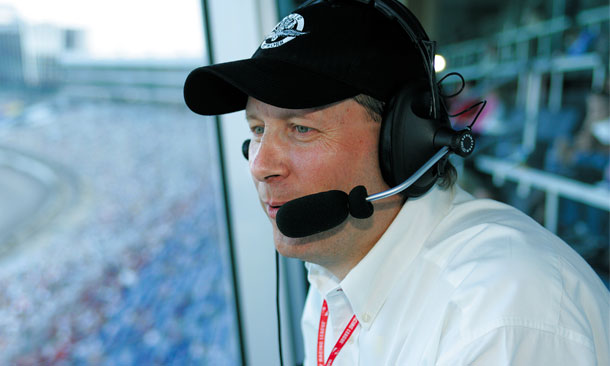
In early May 1952, Shaw and IMS Owner Tony Hulman announced the formation of the Indianapolis Motor Speedway Radio Network, to be headed up by Berry and staffed exclusively by announcers and technicians from WIBC. The track was open for practice and, in fact, several cars had already qualified when IMS President and General Manager Wilbur Shaw announced an 11th-hour arrangement whereby WIBC would fill the void, offering the usual intermittent reports to Mutual stations with Collins as anchor.ĭuring the ensuing months, other local stations began exploring the possibilities of setting up some kind of a network, unaware that WIBC’s sales manager, Gil Berry, was already well along with such a concept. – declining and nobody else immediately standing in the wings, there existed the very real possibility of no network coverage at all.

As it turned out, Slater came at the last minute anyway, but he thoughtfully asked Collins to co-anchor with him.įor reasons unknown, Mutual decided to hike its advertising rates by a considerable margin for 1951 and with its prime sponsor – Perfect Circle Piston Rings of Hagerstown, Ind. When it was rumored ill health might prevent Slater from coming in 1950 – and Kelly had just left, eventually to become the radio voice of the Philadelphia Phillies – 26-year-old Sid Collins was placed on standby. Mutual would send in Bill Slater from New York each year to work with an all-WIBC crew and to co-anchor with the station’s sports director, Gene Kelly (not MGM’s!). Mutual’s immediate pre-war track coverage had been provided by Cincinnati’s WLW, but by 1946 it had aligned itself with a comparatively new Indianapolis station, WIBC. National coverage came instead from the Mutual Radio Network, an organization which rather than generate its own programming, would tend to pick up something from a subscribing station and make it available to others within the network. When the “500” resumed after World War II, the prime networks did not return en masse. He would continue returning to the race well into the late 1930s, while another famous name, Ted Husing, was on hand for CBS in 1936. In spite of having “called” such historical events as the 1924 Republican convention and the infamous Jack Dempsey-Gene Tunney “long count” boxing match, McNamee later wrote quite emphatically in the 1929 race program that the start of the “500” was the most spectacular sight he had ever witnessed.

This was effectively the grandfather of today’s WRTV.Īnother significant step took place in 1928 when NBC came in to air the final hour of the race loaded for bear by sending the already-legendary Graham McNamee as its anchor. A second came in 1925, which had just debuted six months earlier from the Indianapolis Athletic club, using the call letters WFBM. A more formidable effort came in 1924 with periodic updates heard over a station from Chicago, WDAP, which would very shortly become the powerhouse WGN. Radio broadcasts emanating from the Indianapolis 500 date all the way back to the early 1920s, when the handful of local residents who even owned a receiver in 1922 were able to pick up crackle-punctuated, fragmented descriptions of the race from what were basically HAM radio operators. IMS Radio Network Has Brought Indy 500 Action for DecadesĪp| By Donald Davidson, Indianapolis Motor Speedway


 0 kommentar(er)
0 kommentar(er)
